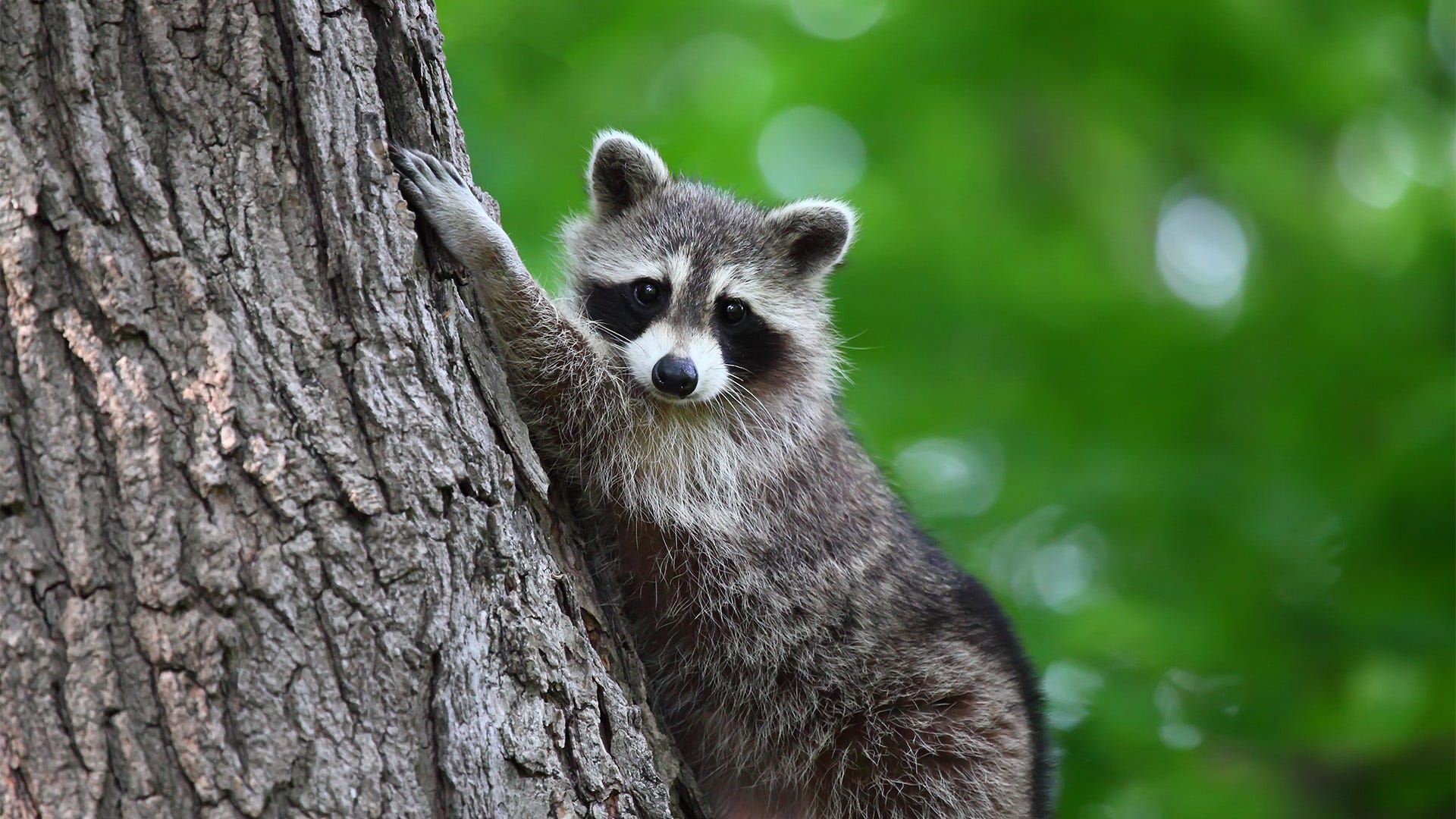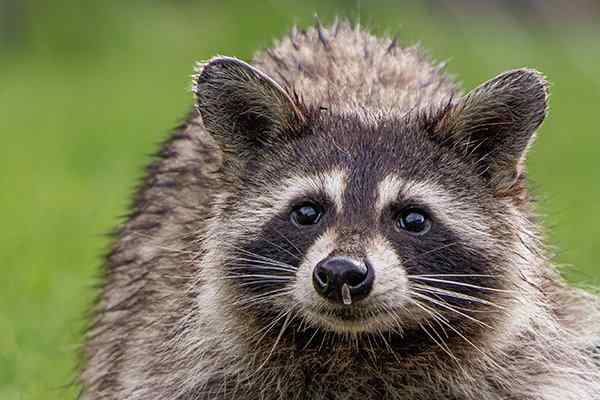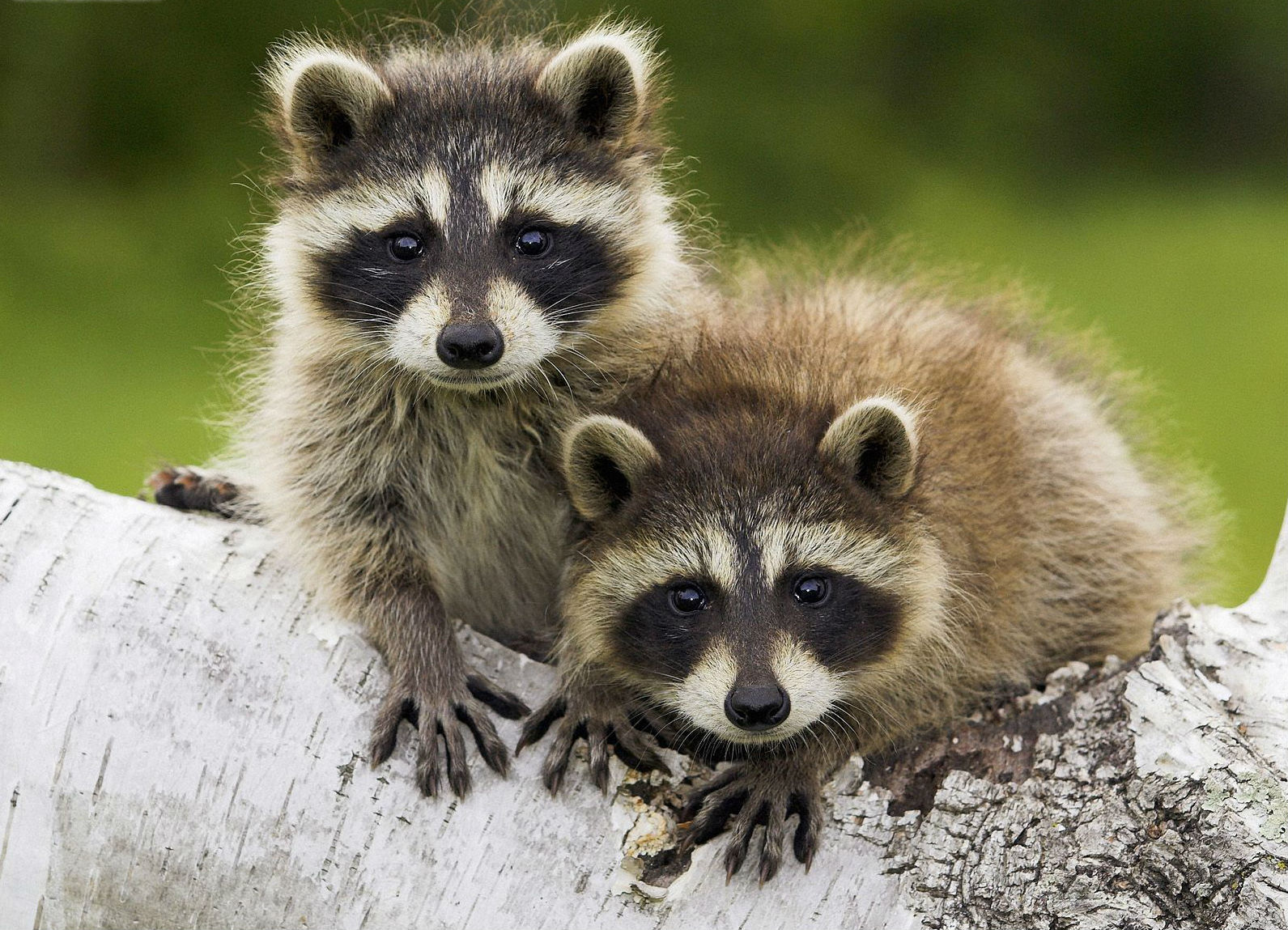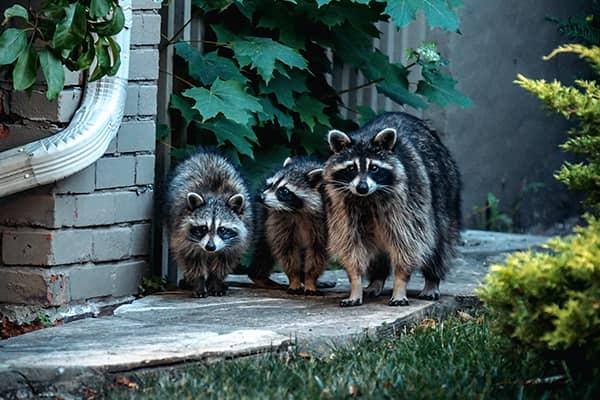do raccoons live in cypress trees
Raccoons are extremely adaptable. If a raccoon tries to climb the fence its weight will pull the top down and land the animal back on the ground.

Raccoon Big Thicket National Preserve U S National Park Service
Raccoons prefer hardwood forest habitats since they require trees bushes and other cover for protection.

. Roughly 50-70 of their populations consist of animals under a year old. When it comes to living on trees Raccoons often prefer trees with large and long branches where they can easily jump. One rare case of a pet raccoon reaching 75 lbs.
Tree hollows are actually some of raccoons favorite denning sites as they provide shelter from predators and the elements so property owners may see adults climbing trunks to their nests. The recommended method for this is live trapping. A raccoon may live in a tree one night and relocate to a cozy spot in your attic the next night.
Do Raccons Live in Trees. Populations of raccoons often include many youngsters and families will stay together for about a year. How does one do it.
Not only that but in some cases they have been known to gain access to the inside of homes through chimneys and attics in order to. 18 to 104 kilograms according to National Geographic. We have renters next door with four large cypress trees.
They often use trees as strategic areas where they can jump on unsuspecting. You will usually find these napping trees are idyllically placed close to water. Install a 4-foot-high wire fence around your garden.
They can easily clamber up uneven and rough vertical structures. There they make their dens in the hollow parts of trees as well as abandoned burrows traveling up to 18 miles to forage for food. Raccoons do not hibernate during the winter but they will live in dens for periods of severe weather causing them to lose a lot of their body fat in northern areas.
The preferable area where raccoons will build their nests are regions that have abandoned logs or timber trees that are close to crops such as corn and vegetables. Its grayish coat mostly consists of dense underfur which. While it has happened it is very unlikely that a raccoon will live in the branches of the tree.
There are reports of bald cypress growing in Minnesota and New York in zone 5 or colder. Raccoons are really smart animals with almost human-like hands which make it easy for them to dig through trash and eat whatever is available to them. Raccoons also like to nap in the trees particularly when it gets really warm after they have eaten.
They are strong enough to climb up trees fences or walls. Raccoons are about as big as small dogs. Yes raccoons often live in trees.
They are often found in suburban and urban areas making. Also they live in Asia South America and Europe. Raccoons are adaptable to environmental changes and can live close to human developments that include city life.
It just isnt the most feasible option for them. Raccoons will eat anything they come across including fish frogs snakes and even dead animals. They will eat pet food that has been left out or even go through pet access doors to find food.
Most raccoons however will rest inside one of their dens. These are not animals that are particularly agile so working their way across a series of tree branches and then expecting to sleep in them without falling out is not one of their more marketable traits. Trees are Perfect solution for thisThey may choose to live in tree trunks or in especially dense foliage that can provide reliable shelter.
They grow to about 23 to 37 inches 60 to 95 centimeters and weigh 4 to 23 lbs. For example an allee of bald cypress was planted at Longwood Gardens before 1955. Where do raccoons prefer to live.
In the big picture though raccoons are native to nearly every part of the United. Predominantly they are common in North America including the US and Canada. They also find shelter in abandoned cars attics crawl spaces barns and sheds.
Leave the top 12 to 18 inches unsecured and bent outward. However it is not easy for raccoons to climb up trees that has smooth surface. While raccoons can climb trees they do so because it helps them to find sustenance and escape from predators.
Traditionally raccoons prefer heavily wooded areas with access to trees water and abundant vegetation. They are a common sight near farms and woodlands because of abundant trees. Buy a cage trap bait it and leave it in an area the raccoons spend time in.
It can with stand substantial wind ice and snow with little or no damage. When in the wild they have a short lifespan of 2 3 years. Raccoons have got flexible and powerful body structure.
You need to take measurement of the trunk. Personal stories aside lets move on to the practicalities of getting rid of raccoons. Raccoons do not hibernate but they can hide under trees during extreme weather conditions such as winter.
Raccoons may climb trees in order to rest safely during the day. While hiding under trees or in their dens they use the fat stored up to provide extra insulation for their bodies and the bodies of their young ones being raised. They often live in hollow trees during the warm part of the year.
This will be because of the plentiful bugs and other critters that the raccoon can eat as well as the water in which they can swim and also drink. Almost anything edible will do for bait sardines fruit or bread all work and a couple of ears of fresh corn will usually be effective. While their activities are defined by the seasons raccoons only live three to five years in most cases.
Well here are some tips. The raccoon r ə ˈ k uː n or US. Raccoons prefer to live in small dark and enclosed spaces that will give space to them and their families but keeps them safe from predators.
You should now make the collar a piece of sheet metal that is some 36 inches in length and 3 inches wider than. Most raccoons seem to prefer sleeping in large holes in trees or hollow parts of fallen logs. Keep all food waste locked up once you dispose of it outside of your home Get a magnet locking cat door.
Check the trap every morning and if you have a raccoon in there take it well. Bald cypress hardiness zones are listed as 4-9 5-10 and also 4-11. Raccoons can grow up to 27 inches in size weighing nearly 40 lbs.
They are not arboreal animals that actually live in treetops but instead these climbing skills help them temporarily get into a better. Spray plants with a mixture of 1 gallon of water and 2 tablespoons of hot sauce or garlic puree. This will help you find a collar that is the correct size.
Raccoons change dens frequently sometimes moving on to a new den every night. R æ ˈ k uː n Procyon lotor sometimes called the common raccoon to distinguish it from other species is a mammal native to North AmericaIt is the largest of the procyonid family having a body length of 40 to 70 cm 16 to 28 in and a body weight of 5 to 26 kg 11 to 57 lb. These mammals are able to climb and are sometimes seen in trees leading some to wonder Do raccoons live in trees The answer is no except in cases where a den is located inside a hollowed tree.
The reach will dependon the size of the raccoon but you should remove all entrancesthat are within some 36 inches from the ground. Since they have sharp claws raccoons in. They harbor lots of rats we have seven secure baits around our fence line and now an opossum and a.
The family group may remain intact for about a year. Raccoons may appear cuddly and fuzzy little creatures but they are masked bandits.

Pin By Alan Kubala On Arbres Magnifiques Trees To Plant Tree Tree Trunks

Raccoon Big Thicket National Preserve U S National Park Service

Tree Hugger Raccoon Floridawildlife Wildlifeaddicts Nikond7100 Neature Cypressswamp Oldflorida Tree Hugger Cypress Swamp Cat Whisperer

How To Keep Raccoons Out Of Your Yard

Bayou Song Book In 2021 Song Book Interactive Journals Songs

3 Unique Ways That Raccoons Can Damage Your Trees Pest Pointers

3 Unique Ways That Raccoons Can Damage Your Trees Pest Pointers
Do Raccoons Live Or Sleep In Trees

Blog Problems Raccoons Can Cause For Cypress Homeowners

Where Do Raccoons Live Wildlife Informer

Honey Island Swamp Tour Slidel La Swamp Tours Louisiana Bayou Reality Tv Stars

Woody Pond National Wildlife Refuge Wetland Wildlife

Getting Rid Of Raccoons The Tree Center

Where Do Raccoons Live Wildlife Informer

Rocky Raccoon By Travels With Charlie Rocky Raccoon Raccoon Forest And Wildlife



